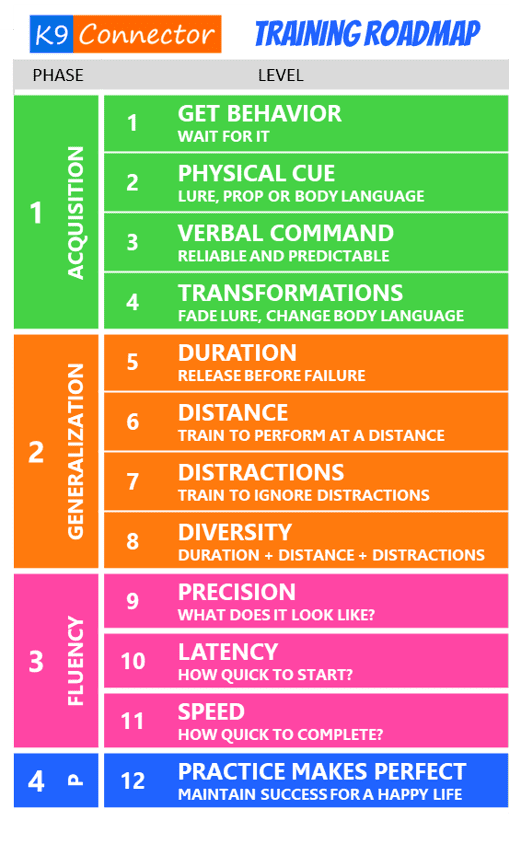
Engagement
Is your dog engaged with you?
- Does your dog know his marker word?
- Does he understand your communication system?
- Does he want to be with you?
- Does he want what you have?
- Is he focused on you?
- Does he tune out distractions?
If you answered yes to all of these questions, you have engagement. If not, you're not ready to train and your dog is not ready to learn.
One of the first things I teach my clients is how to get their dog's engagement.

You Need a Marker System
A good communication system consists of three core markers. YES, GOOD, and NO. I recommend you also teach your dog NOPE, FREE, READY, and ALL DONE. Once your dog understands your marker system, it will be easy to teach him anything!
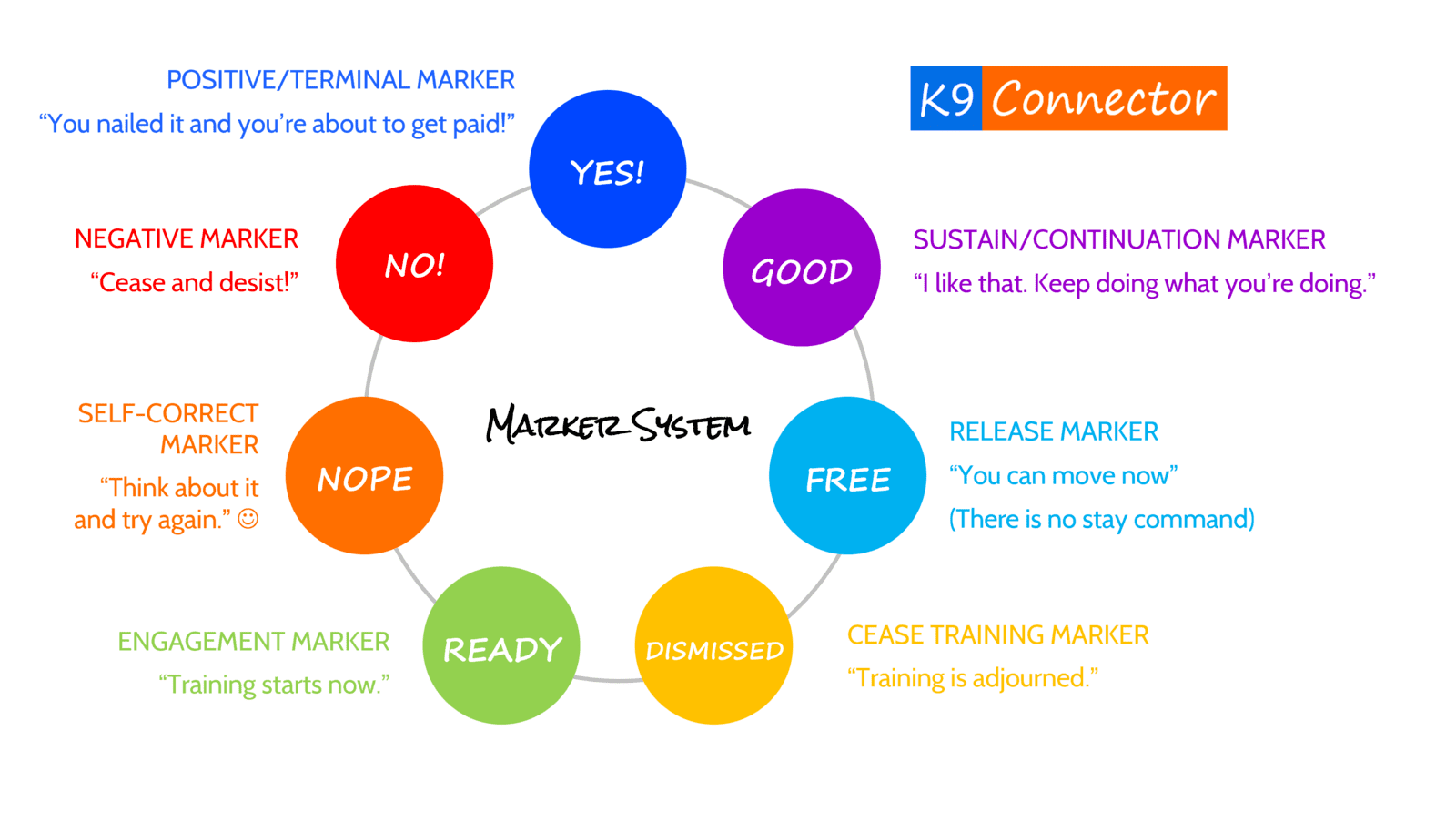

How Dogs Learn
Do you speak your dog's first language? Or do you expect him to understand yours?
Dogs are masters at reading body language. Intentional or unintentional, they learn from our visual cues. Once your dog is responding to your visual cue at an 80% success rate, you can introduce a verbal command for the behavior. But don't say the verbal command and give the visual cue at the same time. If your verbal command precedes the visual cue by one second, your dog will learn to anticipate your visual cue.
Consequently, you will observe your dog following the verbal command before you give him the visual cue. And eventually, he will follow your verbal command in the absence of a visual cue. And that's what you want. You don't want to have to get eye contact before you can give your dog a command. You want your dog following commands even when you're not making eye contact.

Training Methods
There are 5 methods to teach a dog a new behavior. They are luring, shaping, targeting, capturing, and modeling/molding. Each method has unique benefits and challenges. There is more than one way to teach any behavior. And sometimes more than one method is used to teach a behavior. Your dog's primary trainer should be familiar with each training method and know when and how to use them.
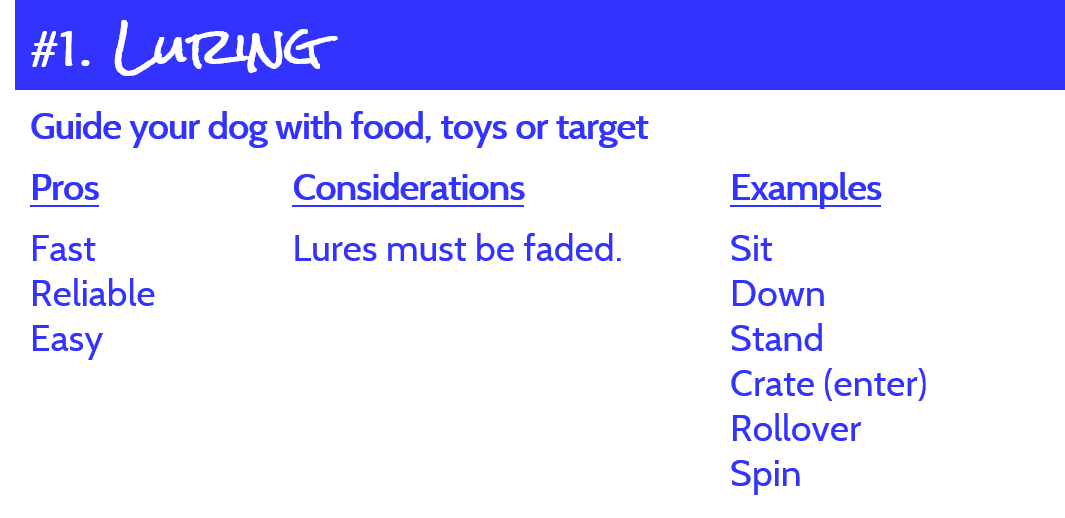
The LURING method is great for teaching position-related behaviors to your dog because you can use food to steer your dog into the position.
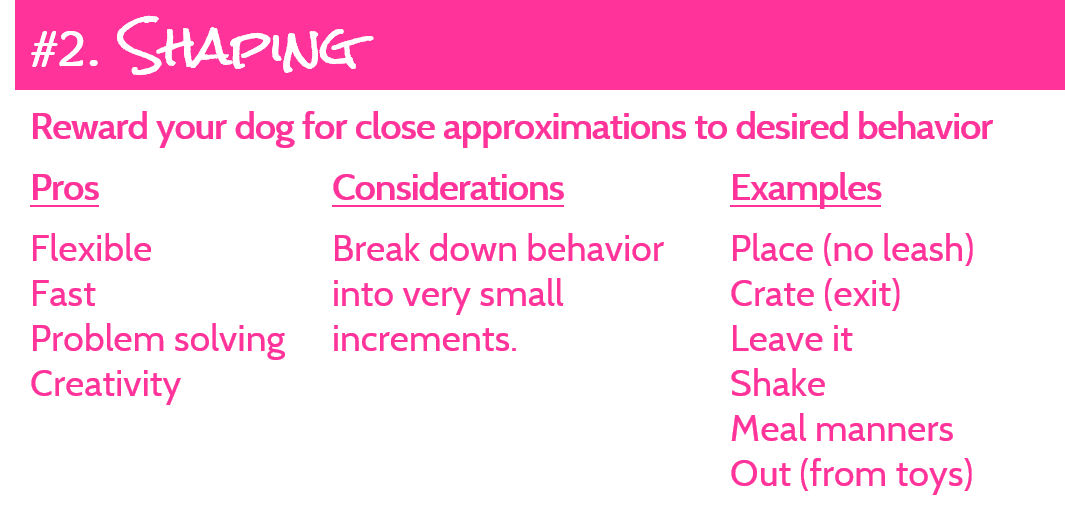
When you want to teach your dog a complex behavior, you will use the SHAPING method. The SHAPING method requires your to figure out what you want him to do. For this to work, your dog has to be willing to experiment and troubleshoot with you during training.
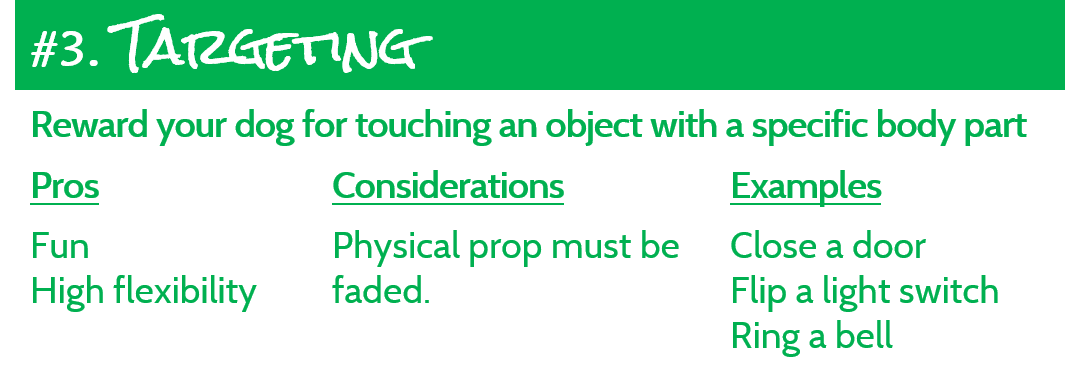
Targeting is not really a training method. It's a behavior. But it is listed here because it fits very well into a conversation about training methods. If targeting is a behavior, what is the training method? It's SHAPING. You use the SHAPING method to teach targeting.
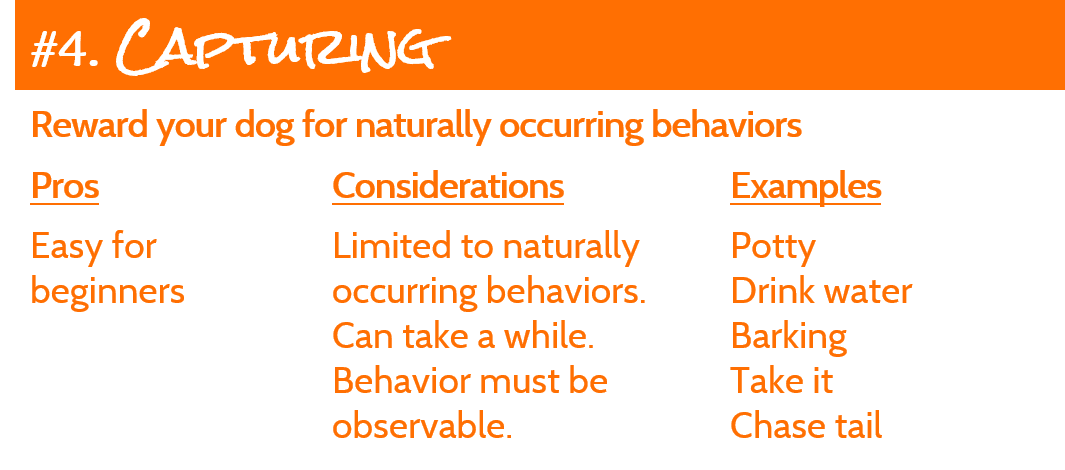
When CAPTURING a naturally occurring behavior, you can be proactive or reactive
| PROACTIVE | REACTIVE | |
| Predictability | You can predict when your dog is going to perform the behavior | You cannot predict when your dog will perform the behavior |
| Verbal Cue | You will say a verbal command right before your dog performs the behavior | You can not say a verbal command before the behavior because you don't know exactly when it is coming |
| Example | POTTY because if you watch your dog's legs, you know exactly when he is about to potty | YAWN because no matter how closely you watch your dog, you can't know exactly when he is going to yawn |
| Reward | Generally speaking, the behavior is the reward so no YES and no food reward | When you have observed your dog has completed the behavior, you will say YES and deliver a reward |
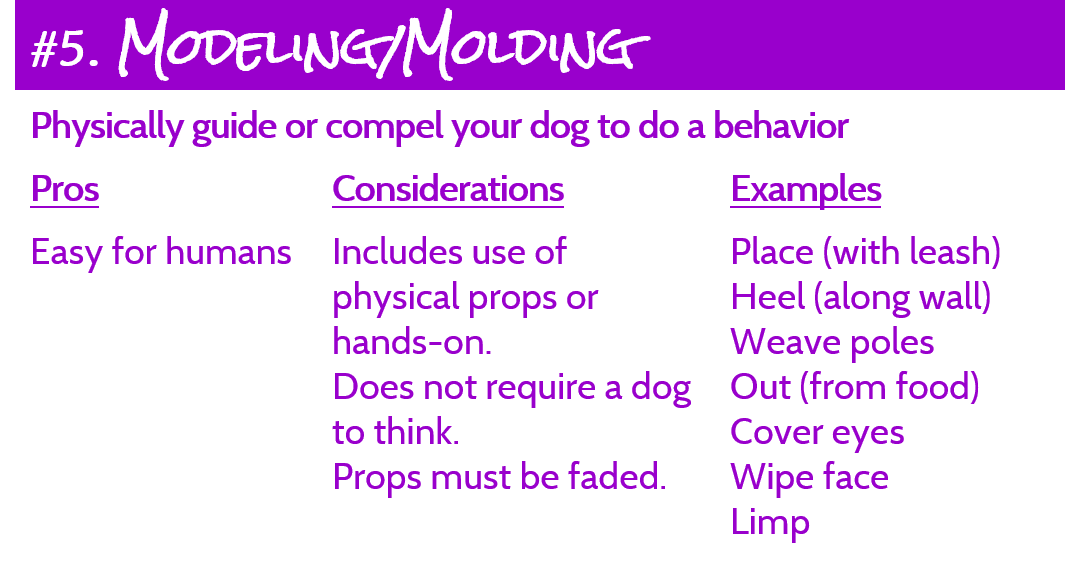
Modeling is guiding. Molding is compelling.
The modeling and molding training methods were widely used decades ago. For too many dog trainers, this was the only training method they used. They used physical force to teach everything. They pushed down on the dog's butt to teach SIT. They yanked on the leash to teach HEEL. (You get the idea.)
There is still a place for modeling and molding in dog training. It's just not our "go-to" method for every behavior. If a different method will create a fun experience for you and your dog, while strengthening your bond and encouraging your dog to think, we will use the other method. And if we do use modeling or molding, we tend to use these methods in conjunction with other training methods.

The K9 Connector Training Roadmap
This is our 12-step plan to teach your dog any behavior
- Acquisition
- Generalization
- Fluency
- Maintenance
OUR TRAINING ROADMAP
When DeLisa learned about the 4 phases of learning, she created a roadmap to help her teach Max any behavior. The roadmap contains12 steps that span the 4 phases of learning. Each level has a prerequisite and a specific goal. Your dog will learn something new from you about each behavior on each level. The roadmap works for everything from basic obedience like SIT and DOWN, to advanced behaviors like SPIN, CRAWL and ROLLOVER.
12 LEVELS
When you enter the ACQUISITION phase, levels 1-4, you will select the training method based on the behavior. The behavior usually determines which training method you will use.
In the GENERALIZATION phase, levels 5-12, everything is done using the SHAPING method. Once you reach level 5, your dog will eagerly and happily try to figure out what you want from him.
How much time a dog spends on each level depends on the dog and the behavior. Your dog might spend a week on level 3 for SIT. He might spend 2 weeks on level 5 for LIE DOWN. For another behavior, he might skip a level completely because it's not applicable.
GOOGLE IT
Google "4 phases of dog training". You will find some wonderful information on how to train your dog!
